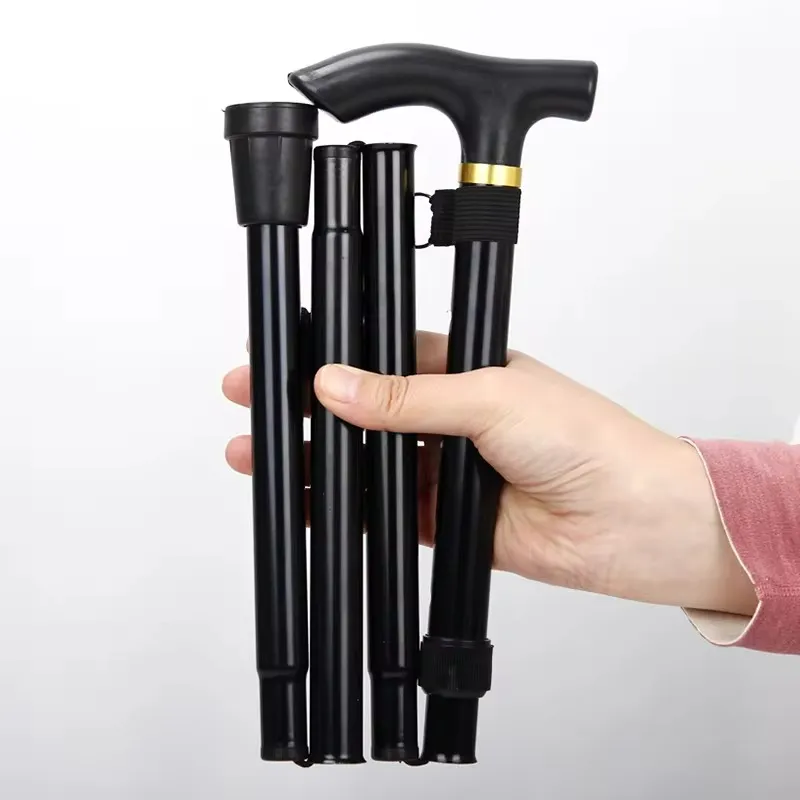Crutch: Lightweight, Adjustable, Durable — Price & Types
Field Notes on a Crutch that Hospitals Keep Reordering
I’ve spent a fair part of the year poking around rehab wards and procurement rooms. One item keeps popping up in order logs from North China to Eastern Europe: a lightweight, height-adjustable walking aid from Zhouhu Village, Jizhou Zone, Hengshui, Hebei. The model name is a mouthful—High Quality Hospital Medical Adjustable Old Man Walking Stick—but staff just call it the Crutch. It’s basic in the best sense: tough, easy to clean, and surprisingly steady outdoors.

Why this matters now
The walking-aid market is shifting toward lighter frames, grippier tips, and simpler adjustability. Hospitals want SKUs that pass international tests yet don’t blow up budgets. This Crutch leans into the essentials: anodized aluminum, ergonomic handle, and outdoor-ready tips. Many buyers say it’s the “no-drama” choice for wards with high turnover.
Core specifications
| Parameter | Spec (≈, real-world use may vary) |
| Height range | 82–92 cm (10 mm step adjust) |
| Net weight | ≈0.3 kg |
| Shaft material | 6061-T6 anodized aluminum, matte finish |
| Handle | Ergonomic polymer with light texturing |
| Tip | Non-slip TPR; outdoor ambient type |
| Load testing (lab) | Static ≥130 kg; fatigue ≥100,000 cycles (bench data) |
| Service life | Around 2–3 years in clinical rotation, longer for home users |
| Origin | Zhouhu Village, Jizhou Zone, Hengshui, Hebei, China |
Process flow and quality controls
Materials → aluminum extrusion → CNC cut → bead-blast → anodizing → handle overmold → height-button assembly → tip press-fit → 100% visual check → load and slip tests (sampling) → packing. Tests commonly reference ISO 11334-1 for structural integrity and ISO 24415-1/2 for tip friction and endurance. In fact, procurement officers increasingly ask for CE (MDR) and ISO 13485 QMS documentation. I guess they’ve learned the hard way during audits.

Where it’s used
Hospitals (orthopedics, geriatric wards), rehab centers, community clinics, elder-care providers, and—surprisingly—municipal loan programs. Outdoors on sidewalks and parks is fine; wet tiles require the usual caution, but the tip compound scores well in lab slip tests.
Customization
- Laser logo, colorways (graphite, silver, sand).
- Alternative height ranges (e.g., 75–85 cm) for shorter users.
- Choice of foam sleeve or polymer handle; wrist strap add-on.
- Winter tip or quad-base option for special tenders.
Vendor snapshot (how it stacks up)
| Vendor | Certs/Standards | Typical Lead Time | Notes |
| ZhaofaMed (Hebei) | ISO 13485; CE (MDR) docs; ISO 11334-1/ISO 24415 test reports | 15–25 days | Balanced pricing; strong OEM options |
| Generic OEM Cluster | Basic COA; mixed ISO coverage | 20–35 days | Lower price; variable QC—audit advised |
| Big-Brand A | ISO 13485; MDR; often FDA listed | 30–45 days | Premium finish; highest cost |
Field feedback and test data
Nurses say height adjustment is “idiot-proof.” One rehab therapist logged about 5 km/week use; after 6 months, the tip wear was moderate with grip still reliable. Bench tests I reviewed showed static load at 130–150 kg without deformation, and tip friction per ISO 24415-1 above 0.5 on wet ceramic—good for its class. To be honest, that’s what most buyers really screen for.

Use cases
- Post-op hip/knee support when a single Crutch is prescribed.
- Community fall-prevention programs where weight matters.
- Travel and outpatient use—lightweight, packs into cars easily.
Bottom line
If you need a dependable, audit-friendly Crutch with fast lead times, this Hebei-made unit is a safe bet. Not flashy—just solid engineering, fair pricing, and the paperwork that keeps compliance teams smiling.
References
- ISO 11334-1:2007 Walking aids manipulated by one arm—Requirements and test methods.
- ISO 24415-1/2: Tips for assistive products for walking—Requirements (friction, endurance).
- EU Regulation (EU) 2017/745 on medical devices (MDR) – Classification and conformity.
- ISO 13485:2016 Medical devices—Quality management systems—Requirements for regulatory purposes.



































